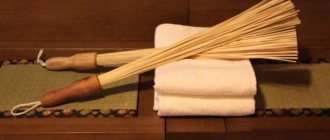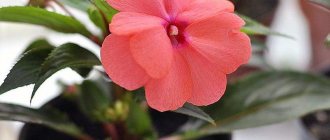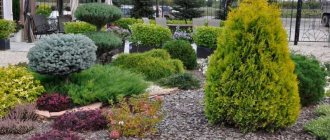Friends, do you want to grow an exotic plant Dracaena Sandera for your office or home? If you don’t have time to grow indoor flowers, find out how to care for indoor bamboo at home. Using my experience, tips and tricks, try growing a whimsical arrangement!
Three-tier composition - decoration for any room
How to grow indoor bamboo plant at home
The evergreen plant belongs to the dracaena family. Bamboo comes in tree and reed varieties. The thickness of the trunk ranges from 2-30 cm. In natural conditions it reaches a height of up to 30 meters. A tree-type flower blooms once every 30 years, a decorative one - every 40 years. After abundant flowering, the bamboo dies.
Comrades, do you want to have an evergreen and flowering plant on your windowsill? Learn how to grow cardamom in a pot.
Decorative bamboo is a decoration for offices and living rooms. It requires a minimum of care, good lighting and mineral fertilizers. General characteristics - a hollow stem, depending on the height, divides plants into groups:
| View | Height | Popular varieties |
| Short | 1m | “Golden Lily”, “Tsuboi” |
| Average | 3.5 m | “Shiroshima”, “Mexican weeping” |
| High | 6 m | “Tropical Black”, “Monastic” |
What does the plant look like?
The culture that we used to call bamboo is actually one of the types of shrubby dracaenas. Namely, this is a representative of the Sandera variety. Indoor bamboo is a perennial evergreen plant with a bare, dense stem. The color of the trunk varies from dark green to light green. Due to the fact that the stem is plastic, although quite elastic, it twists into a spiral during growth, which allows it to be formed into a bonsai. The trunk is crowned with a miniature cap of leaves and shoots. There are 2 varieties of bamboo cultivated at home.
- Short. Suitable for decorating office areas and residential buildings. Natural habitat - Brazil. Loves cool air and high humidity. Reaches a height of 1.5 m.
- Medium height. Made in Japan. Can stretch up to 4 m in height. Loves abundant lighting and spacious tubs.
bamboo can be grown from seeds or from a shoot; with proper care, the plant will be strong and beautiful
What fertilizers are needed for normal growth of bamboo at home?
The houseplant is unpretentious; any mineral fertilizers with nitrogen-phosphorus content are suitable for dracaenas. If you do not add organic ingredients, the tips of the bamboo leaves will gradually turn yellow or straw-colored, then dry out and fall off. I described how to prevent this in another article. Be sure to read it!
Is it correct to use phosphorus fertilizers?
Yes No, what are you talking about!
How to care for bamboo
I would like to draw your attention to how you care for bamboo depending on the growing environment. The yellowing of the trunk and the pale color of the leaves will remind you that you need to change the water to fresh water or feed the plant. If you forgot about bamboo and did not irrigate the soil for a long time, you can see how the leaves have curled into a tube.
In summer
I water the plant twice a week with settled rainwater. Before watering, I loosen the top layer. I collect fallen leaves for mulch to protect the roots from drying out. In the summer, I take the bamboo out into the fresh air, it will be useful for it.
In winter
With the onset of autumn and until spring, bamboo is in a dormant stage, so I reduce the amount of watering. I moisten the soil once a week using purified or melt water, spray and wipe the leaves. In winter I place the exotic plant in a warm, but not very dry place with a temperature of at least +18 degrees and a humidity of at least 40%. I organize additional lighting using an ultraviolet lamp.
The cold also affects humans; keep a supply of horseradish for the winter to fight diseases.
Secrets and difficulties of home care for indoor bamboo
Depending on where the plant is grown - in soil or in water, there are 2 options for caring for Sander's dracaena. In addition, this species has a weak rest period, which begins in mid-autumn and continues until spring. Caring for dracaena during the dormant period and during the growing season is different.
Growing and care in water
Bamboo can be grown in water. This foundation promotes rapid and harmonious plant growth. For bamboo, capacity is not of fundamental importance. But it looks most impressive in transparent vases or glasses. To increase the decorative effect, you can place several plants at once in a glass pot, tying them with a ribbon of a contrasting color.
Place some pebbles at the bottom of the flowerpot. First you need to wash it thoroughly, then boil it. The bamboo is freed from the old soil, the roots are washed. Growing in water is only suitable for healthy plants. If root rot is detected in dracaena, water will only contribute to its rapid development. Healthy bamboo is placed on pebbles and filled with water.
For cultivation, only soft water is used. You can use distilled or settled rainwater. The use of household water is unacceptable, even if it has been previously filtered.
The water is replaced with fresh water weekly. Every 2-3 months, when changing the water, mineral fertilizers are applied.
Bamboo can also be grown in hydrogel. It is advisable to use small granules. The plant is placed in hydrogel and filled with water. It is necessary to periodically add fresh water. Feeding is introduced every six months.
Landing in the ground
Dracaena is not picky about soil. Its only requirement is good air exchange. Therefore, the flower is grown even in universal soil. You can prepare the soil yourself. To do this, you need to mix the following components:
Watering rules
Many beginners believe that bamboo is a drought-resistant plant and does not need to be watered. Friends, this is a mistaken opinion. The ornamental plant loves water very much, and a deficiency will not allow it to take root in a new place. In order for bamboo to acclimatize to new conditions, follow these rules:
- Water the plant after planting in the ground as often as possible for 3-6 months.
- Fill the plant in the pot with 5 cm of water once every 10 days.
- To retain moisture, use mulch, this is ideal for those who forget to water.
- Touch the soil with your hand, if it is dry, water it.
- Drain excess water from the pan; excessive waterlogging damages the root system and it begins to rot.
- Watch the bamboo; if the leaves are curled, it means it needs watering; if they turn yellow, reduce the quantity and rate.
- Use only purified or settled water; in the water pipe it contains chlorine, this is death for the plant.
Author's note
Natalia Papanova
Blog author
For irrigation, use melt water. Fill a plastic bottle with regular tap water and place it in the freezer.
Watch a video about home care for Dracaena Sandera:
Propagation of indoor bamboo
There are three methods of propagating plants at home, each with its own specifics.
Seeds
This method is considered labor-intensive and the most ineffective. Most often, it is used only by professional gardeners who work on breeding rare varieties.
Soak the bamboo seeds in moistened gauze and wait until they germinate. Seeds on which sprouts have appeared should be transplanted into a container with a pre-prepared substrate and drainage.
Create something like a greenhouse: equip a covering that will create a microclimate with high levels of heat and humidity. Ventilate your greenhouse once a day, spray the seedlings once a day. When the plants reach a height of 5 cm, the best ones are selected and transplanted into separate containers. Please note that one container is needed for one seedling, do not try to save space.
Cuttings
During replanting, you can kill two birds with one stone: improve the conditions for the existing plant and get several new ones. The cuttings are separated and planted in the soil. Water them generously at first, then reduce watering and protect the seedlings from excessive light. As with seeds, you can create a small greenhouse.
Dividing the root
If you are a beginner gardener, this method will work without problems. You can cut the rhizome (make sure there are shoots or buds before doing this). From one such material you can get new young bamboo plants.
How much light does this houseplant need?
Friends, bamboo needs light and warmth to be completely happy. Choose a place where there is no direct sunlight. The prolonged and powerful effect of ultraviolet radiation is detrimental to the plant. If you put bamboo on a south-facing window sill, provide the windows with blinds that will help regulate daylight.
Decorative flowers love warmth, maintain a comfortable temperature of +22 – +32 degrees. If indoor bamboo falls into frost conditions of -15 degrees, the trunk will remain, but the leaves will darken.
How to twist indoor bamboo
Surely you have noticed how original the curved bamboo trunk looks against the background of its “straight” counterparts. You can achieve this result at home.
First way . The young cutting is planted in a container, which is completely covered with a box with a hole made. The young sprout will reach towards the light, and you just have to turn the box in time to change direction. Get ready for the fact that this will not happen soon - in one year you will be able to make one revolution.
The second method is to curl the bamboo around a support using wire.
How to propagate bamboo at home
There are three ways to propagate bamboo by cuttings, seeds and root division. The first method is the most popular at home. The seed method is used less frequently; the seed forms the root system over several months. By dividing the root, it is propagated when replanting the plant.
If you wait a long time for bamboo seedlings, you can grow honeysuckle, find out how to do it quickly.
I advise you three options for propagation by cuttings:
- Cut off the top of the mother plant with leaves at least 15 cm long, place it in water, adding 1 drop of root growth stimulator per 1 liter of water.
- If the top part of the plant does not take root, try the stem method. Divide the mother plant into several parts, which are placed in water.
- If the plant is old and weakened, try the knee propagation method. Select the greenest part, cut off the part from the mother plant just above the junction of the segment and place it in water.
Bamboo cuttings have given roots and are ready for planting in soil
If you want to start growing bamboo as a small business, try growing the plant from seeds, following the recommendations:
- Soak the planting material in water for a day, during which time the embryo will hatch.
- Prepare a special substrate from soil, ash and wood shavings.
- Mix all ingredients and sift through a sieve to remove debris and stones.
- Fill a plastic container with the prepared substrate, make grooves 2-5 mm deep and stick the seeds at a distance of 5-10 cm, sprinkle with soil, then pour with warm water.
- Provide seedlings with warm conditions and lighting at night under phytolamps for at least 6 hours.
- When the first shoots hatch, transplant into individual containers using a substrate of peat and soil.
Reproduction by dividing the root system is the simplest; planting material takes root quickly. Fill the soil in the pot well with water and leave for 30 minutes. Take out the bamboo along with the lump, wash it from dirt, and carefully cut off the required number of shoots. You can root them directly into the ground or immerse them in water.
You can decorate living spaces not only with bamboo; pay attention to homemade sage. In addition, it is grown not only for beauty, but also for medicinal purposes.
Growing in soil
Indoor bamboo is not the most fastidious plant, but still, in order to grow a beautiful and healthy specimen, you will need to make some effort and remember a number of important rules. This plant can be grown both in soil and in water. First, let's talk about how to care for bamboo at home if you decide to plant it in a pot of soil.
Lighting and location
Dracaena Sandera loves plenty of light, but you should not allow prolonged exposure to direct sunlight - burns may appear on the stem and leaves. Place the pot so that diffused light falls on the pot at midday. The best placement options would be window sills in the eastern and western directions.
In summer, the flower pot can be taken out into the open air, but do not forget to protect it from direct sun and precipitation.
Often, indoor bamboo tolerates winter well without additional care, but if cloudy weather prevails in your region, it is better to additionally illuminate it in the autumn-winter period using fluorescent lamps. Do this if you notice that your pet's trunk has begun to turn yellow and the foliage has drooped or begun to fall off. Bamboo does not tolerate hypothermia well, so in winter it is better to move it away from cold windows and protect it from drafts when ventilating the room.
This may be interesting: Calathea - subtleties of care
Temperature and humidity
Dracaena Sandera is a heat-loving plant. For its successful growth and development, it is necessary to maintain a room temperature of 22-26 °C, but nothing terrible will happen if the temperature in your room rises to 30 or even 32 °C. Bamboo comes from warm countries, so it easily tolerates high temperatures and absolutely does not tolerate cold. In winter, the average daily temperature should never fall below 18 °C.
Indoor bamboo is a tropical plant, so it loves humidity. In the warm season, in addition to watering, it is necessary to spray the plant 2 times a week with settled water from a spray bottle. In extreme heat, we recommend occasionally giving your dracaena a bath in the shower (use warm water). In winter, move the pot away from heating devices that dry out the air, or place a wide bowl of water nearby.
Wipe the leaves with a damp sponge if dust has accumulated on them. This will help increase humidity and reduce the risk of pest infestation.
Watering
On warm summer days, bamboo should be watered frequently. Varieties with wide leaves are watered approximately once every 2 days, with narrow leaves - 2 times a week. It is not advisable to allow the soil to dry out completely. If the soil in the pot keeps drying out at the recommended frequency of watering, your dragon tree needs more water. The amount of moisture consumed depends on the height of the specimen - the taller the plant, the more water it needs.
To simplify the procedure, you can water indoor bamboo through a tray. This way the plant takes as much moisture as it needs. 3 hours after watering, drain excess water from the pan. Prolonged stagnation of water contributes to the formation of rot on the roots.
For irrigation, only settled, filtered warm water is used, preferably rainwater. Regular tap water contains many substances that are harmful to plants. If it is not possible to collect water, you can disinfect it by freezing.
Top dressing
Dracaena Sandera needs regular feeding once every 1-2 months. The plant better accepts mineral fertilizers for decorative foliage plants in liquid form. Fertilizers designed specifically for dracaenas are ideal. You can regulate the frequency of feeding yourself by monitoring the well-being of your specimen. If, after applying fertilizers, the bamboo turns yellow or begins to shed leaves, then it should be fed less frequently. In winter, the frequency and amount of fertilizing is halved.
Trimming
The dragon tree requires timely pruning to give it a decorative appearance. Without it, the bush will look overgrown and unkempt. Regularly trim dry shoots at the base of the stem.
If you want to have tall, upright bamboo in your apartment, trim off the side branches regularly. The cut areas should be treated with ash or lubricated with wax to avoid the formation of unsightly dry growths.
If, on the other hand, you don't want your bamboo to grow, use a different pruning method. Decide how tall you want the bush to end up and where the branching should come from. Cut the stem just above a node and make a horizontal cut with a sharp tool. This specimen will no longer grow upward, and side shoots will emerge from the notch site.
Transfer
Transplantation is recommended in April-May. It is needed to increase the size of the pot as the plant grows. Young specimens are replanted annually, adults can be disturbed less often - once every 3 years.
This may be interesting: Rules for caring for Dieffenbachia at home
When replanting, the plant should be placed in the center of the pot at such a depth that the roots touch the drainage. After filling the soil, you need to lightly press it down so that the air comes out. Otherwise, in the future it may fail, exposing a large section of the stem. After transplanting, the flower must be watered well and ensure that the soil does not dry out. Once a week the soil needs to be loosened.
Priming
Dracaena Sandera is not picky about soil. The only conditions are that the soil must be loose so that the plant can breathe well. Therefore, you can even use ordinary universal primer. If you want to prepare the substrate yourself, do so by mixing the following ingredients:
- 1 tsp turf soil;
- 2 tsp leaf soil;
- 2 hours of peat.
Pot
The pot of indoor bamboo should match the size of the plant and the number of plants in one pot. The larger your specimen, the larger the pot is needed. The depth of the pot should be 2 times the rhizome, so the width and height of the pot are usually equal. Wide containers are also used, only to create a beautiful composition from several copies. When planting this way, make sure that the outermost stems are at least 5 cm from the walls of the planting container. A pot of any color and material is suitable for growing bamboo, as long as it has drainage holes. At the bottom of the pot you need to place a layer of drainage - pieces of brick, expanded clay. Drainage should occupy 25% of the height of the pot.
Features of caring for bamboo if it grows in water
My dears, caring for a plant if it grows in water is very simple; it feels comfortable in any environment. Change the water once a week, adding activated carbon once a month.
If you want to grow a healthy plant at home without any problems, read about tarragon. This amazing herb fills your home with an amazing aroma and can be used in drinks and salads.
For fertilizing, use liquid nitrogen-phosphorus fertilizers. To avoid causing strong growth, reduce the recommended amount on the package by 5 times. Use foliar fertilizers more often.
Be sure to fill the roots with water 2 cm above their level
How often do you need to replant bamboo and renew the soil?
If the surface layer of the earth is covered with a gray-white coating, the roots of the plant begin to rot from excess moisture. To replace the soil, I take the root ball out of the ground, wash it and disinfect it. I prepare the substrate for transplantation as for initial rooting in the soil.
Author's note
Natalia Papanova
Blog author
Replant a young plant once a year, an adult plant once every three years, increasing the volume of the container.
Watch the video on how to properly root a plant:
FAQ
Natalia Papanova
Blog author
Ask your question
Often, when growing a houseplant, the following questions arise: which type is best to grow, how long it takes to grow, and how to save it if you forgot to water it. My dears, I answer some of them:
Which variety is best to choose for growing?
Choose a low-growing variety of bamboo, the most suitable option being Dracaena Sandera. This plant does not require much space or care; it looks good in a transparent flowerpot with decor and a regular flower pot.
Is it necessary to prune?
Carry out pruning as it grows; new shoots will appear from the bud below the cut point, and the trunk will begin to gradually thicken. If you don't do this, the plant will look like a long fishing rod with leaves on top.
How to revive a plant if you forgot to water it?
Complete yellowing of the leaves and drying out indicates that you did not water the soil. Restoring bamboo is easy. Water the plant abundantly with water, remove the root ball, rinse and place in an aqueous medium with the addition of activated carbon.
How long does bamboo usually take to grow?
It is impossible to say how many years bamboo will grow at home. In nature this is 30-40 years. It all depends on the care. If you keep bamboo in water for up to two years without proper care, it may die. Therefore, it is better to immediately place the plant in the soil.
Do you believe that bamboo can be grown for 30 years?
Of course not
Twisting into a spiral
Often, you can find specimens of indoor bamboo for sale with original and bizarre shapes. This is facilitated by the distinctive ability of the stem to bend and remember its shape. We'll tell you how to achieve this shape at home.
Method 1. Place a stick, cylinder or any other support of the required shape in a flower pot and wrap the stem around it. At first, the structure must be secured with wire. Once the stem becomes woody, the wire and stick can be removed.
Method 2. Cover the pot with the plant with a box so that one side flap is open. The remaining doors and the top must be closed. Then the light will enter the box only from one side - this is where our bamboo will stretch as it grows. After a while, when you can see the stem tilting to one side, turn the box so that the sun hits the dracaena from the other side. So, by constantly turning the box, you can curl the stem of your specimen into a spiral. But this method is very long - one turn can take up to a year.
This may be interesting: Fatsia Japonica (Aralia) - what you need to know about the guest from the east
You can create other, more complex compositions from indoor bamboo, but we’ll talk about this some other time.











